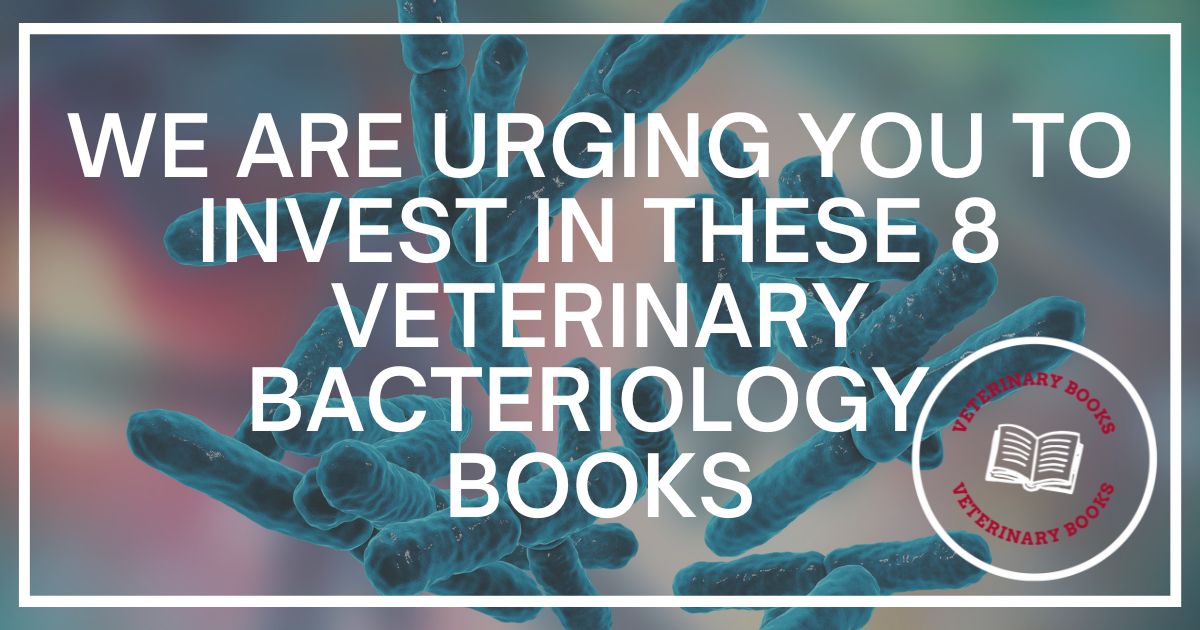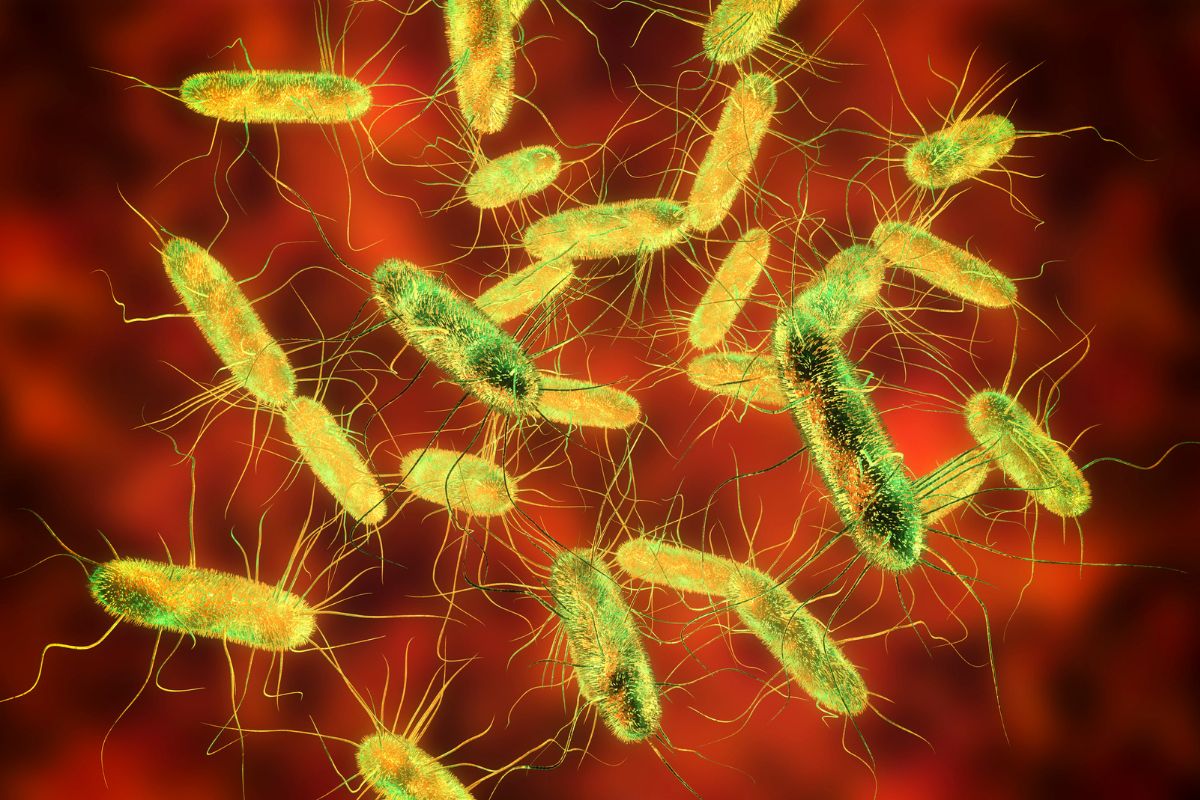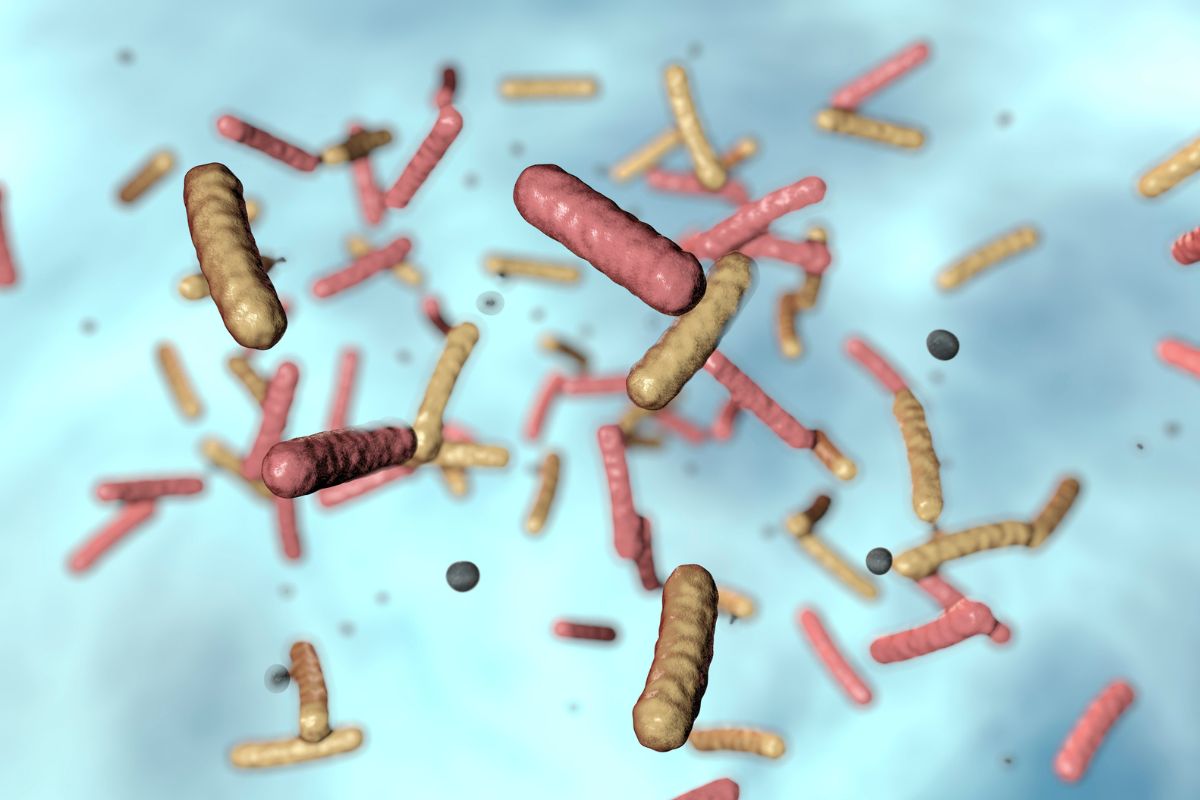What is Veterinary Bacteriology?
Veterinary Bacteriology is the study of bacteria focusing on the specialist field of microbiology, particularly in agriculture and medicine.
The Bacteriology Section’s primary goal is to help veterinarians and pet owners provide the best possible care for animals by identifying the bacteria and fungi that cause disease and determining which antimicrobial treatments the bacteria may respond to. The lab isolates and identifies the organisms linked to infectious processes to achieve this.
















Our Preferred Books About Veterinary Bacteriology
Pathogenesis of Bacterial Infections in Animals 5th Edition
Publisher: Wiley-Blackwell; 5th edition (August 15, 2022)
Language: English
Print length: 801 pages
Availability: New, used
Format: Kindle Edition, Hardcover
Book Overview
A specialized reference, Pathogenesis of Bacterial Infections in Animals, Fifth Edition, offers a thorough analysis of bacterial pathogens in animals and their intricate interactions with disease processes, providing a thorough understanding of how bacteria cause illness in animals. It covers the most recent scientific advancements, including the most recent taxonomies.
This revised and much-awaited fifth Edition includes more introductory chapters to place the information in context and figures to help readers understand and comprehend the book more effectively. The book’s figures are in a PowerPoint presentation format on a companion website, along with citations.
Given growing concerns about antibiotic resistance, this comprehensive reference provides cutting-edge methods for controlling bacterial infections. More than 70 distinguished writers share their knowledge on the subject. Although practically every chapter emphasizes molecular pathogenesis, the authors have taken care to situate infections within a larger context.
The fifth Edition of Pathogenesis of Bacterial Infections in Animals includes details on the following:
- The fundamentals of bacterial pathogenesis, virulence principles, host-pathogen interactions and communication, and pathogenesis in the post-genomic age; themes in bacterial pathogenesis
- Understanding the origins of genetic diversity, population dynamics, and genome flexibility as they relate to the evolution of bacterial pathogens, including their characteristics and modes of emergence
- An overview of genome sequencing technology, an understanding of pathogenesis through pathogenomics and bioinformatics, including how mutations produce pathogen diversity
- Bacterial infections’ interference with immune responses, including interference with innate and adaptive immunity
It is the only book that covers this subject in this depth, thanks to the abundance of knowledge provided by numerous licensed and working professionals.
Leptospira Infection in Wild Animals
Publisher: Nova Science Pub Inc (August 10, 2020)
Language: English
Print length: 237 pages
Availability: New, used
Format: Kindle Edition, Hardcover
Best Sellers Rank: #11,654,612 in Books (See Top 100 in Books)
Book Overview
Leptospirosis, one of the most significant re-emerging zoonotic illnesses, originates from the Gram-negative bacterium Leptospira. The disease disperses widely, and animals play a role in its propagation. Wildlife plays a significant role in the epidemiology of leptospirosis in animals because it serves as a reservoir for a particular Leptospira serovar.
Several species are Leptospira maintenance hosts, while others have received less attention and may be “novel” hosts contributing to its epidemiology.
The book “Leptospira Infection in Wild Animals” includes descriptions of the epidemiology of leptospirosis in several wild animal species, highlighting the infection in various geographic locations, the most prevalent Leptospira serovar, and the risks of disease for both people and domestic animals.
To better comprehend their participation in the leptospirosis epidemiology, data on marine mammals, wild boars, rodents, lagomorphs, wild ruminants, amphibians and reptiles, bats, and non-human primates were thoroughly analyzed and debated.
Tuberculosis in Animals: An African Perspective
Publisher: Springer; 1st ed. 2019 edition (July 1, 2019)
Language: English
Print length: 698 pages
Availability: New and rental
Format: Kindle Edition, Hardcover, Paperback
Book Overview
The biology of M. Bovis is in this book, followed by information on the prevalence of bovine tuberculosis (bTB) in nations across Africa, mostly based on zoonotic and epidemiological field reports. The emphasis is on locally tailored protocols for disease control because the accumulation of data is useless unless it results in workable control actions.
The Epidemiologic Problem Oriented Approach (EPOA) approach thoroughly assesses the body of knowledge regarding BTB.
The technique consists of two triads: the first is the problem identification/characterization triad, which is primarily descriptive, and the second is the problem management/solution/mitigation triangle, which primarily focuses on problem management/solution.
The first triangle has three pillars: agent, host, and environment. The second triad has three pillars: therapeutics/treatment, prevention/control, and maintenance/promotion of health. The diagnostic procedure linkage connects the two triads.
The foundation of our understanding of agent transmission pathways and disease dissemination is the systematic and in-depth study of the interconnections between the “Host-Agent-Environment.”
Data on the prevalence of the disease in the nation, the characteristics of the disease agent and its hosts, the modes of transmission, the natural reservoirs of wildlife, the persistence of infection, and the agent’s survival in animal products and the environment are some examples of this type of information.
The problem identification and characterization triad recognize these relationships. After locating an issue and thoroughly understanding it, the following step is to reduce the likelihood of disease transmission and spread.
This topic, known as the problem solution/management triangle, consists of problem management options that focus on resource-poor, developing countries in Africa and depend on disease prevention/control, health maintenance/promotion, and disease in livestock, wildlife, and humans.
Salmonella Pathogenesis and Progression in the Development of Human and Veterinary Non-typhoidal Salmonella Vaccines Against Human Salmonellosis UK ed. Edition
Publisher: Nova Science Pub Inc; UK ed. edition (December 1, 2014))
Language: English
Availability: New, used
Format: Paperback
Book Overview
Non-typhoidal Salmonella, a significant foodborne zoonotic pathogen, can cause bacteremia, localized infection, and gastroenteritis in people. Through the coordinated expression of complex arrays of virulence-associated genes, Salmonella subverts the immune system of the host.
The dynamics of host-pathogen interactions and infections caused by Salmonella enterica may aid in creating new, specifically targeted prevention strategies and medication regimens. However, the extensive use of antibiotics has caused the establishment of numerous Salmonella strains resistant to them.
Creating effective vaccinations prevents non-typhoidal Salmonella zoonotic infections. Understanding how Salmonella enterica multiplies and lives in tissues is crucial for developing vaccine-induced immune responses targeting intracellular Salmonella.
The global burden of non-typhoidal Salmonella disease can reduce by using cutting-edge information and scientific techniques to create vaccines. At this time, oral live attenuated vaccines effectively protected against Salmonella non-typhoidal zoonotic infection.
However, inactivated or sub-unit vaccines are the safest compared to live vaccinations. In the end, this review investigates the molecular causes of Salmonella non-typhoidal pathogenesis. There is a highlight of recent developments in the production of Salmonella vaccines in addition to pathogenicity.
This paper also analyzes the various advances that can help build Salmonella vaccines in the future.
Bacteria and Fungi from Fish and other Aquatic Animals: A Practical Identification Manual, 2nd Edition
Publisher: CABI; 2nd edition (December 23, 2014)
Language: English
Print length: 904 pages
Availability: New
Format: Kindle Edition, Hardcover
Book Overview
With color photographs as illustrations, this useful book offers an updated resource for identifying bacteria found in animals living in aquatic environments.
It includes updated biochemical identification tables that now include newly discovered pathogenic and saprophytic bacteria, more information on the pathogenesis and virulence of each organism, new coverage of traditional and molecular identification of fungi pathogens, and quality assurance guidelines for labs.
Additionally, it now offers molecular identification tests for many aquatic bacterial pathogens.
Anthrax in Humans and Animals
Publisher: World Health Organization; 4th edition (March 31, 2009)
Language: English
Print length: 215 pages
Availability: New, rental
Format: Paperback
Book Overview
The considerable new scientific literature and pertinent publications up to the end of 2007—including all the latest information that surfaced in the three to four years following the anthrax letter events—have been systematically reviewed for this fourth version of the anthrax guidelines.
This revised Edition offers guidance on the detection, diagnostic, epidemiology, disinfection and decontamination, treatment, and prophylaxis procedures, as well as control and surveillance processes for anthrax in humans and animals. It also provides information on the disease and its importance, as well as its etiology and ecology.
It is a relevant source of knowledge for managing anthrax in humans and animals and has undergone two rounds of a thorough peer-review process.
Veterinary Microbiology: Bacterial and Fungal Agents of Animal Disease
Publisher: Saunders; 1st edition (December 7, 2004)
Language: English
Print length: 448 pages
Availability: New, rental, ebook
Format: Kindle Edition
Best Sellers Rank: #2,703,823 in Books (See Top 100 in Books)
#22 in Veterinary Microbiology
#68 in Equine Veterinary Medicine
#80 in Food Animal Medicine
Book Overview
The most recent information on pathogenesis and diagnostics is available in the Veterinary Microbiology impact factor, which discusses trends in host/parasite interaction and specific, well-defined problems. This book has an exhaustive reference on microbial biology, illnesses, diagnosis, prevention, and control.
Additionally, it gives a foundational understanding of pathogens and how they relate to hosts.
It consists of a thorough and current overview of the bacterial and fungal pathogens that affect animals, including newly discovered species and the etiology of developing diseases.
There are More than 100 full-color pictures to help reinforce important ideas.
The book is simple to use and a quick reference in the therapeutic setting. It discusses ailments that may impact the herd’s health and individual animals’ productivity.
It also explains how you may use various species in biological warfare and bioterrorism.
Veterinary Microbiology: Bacterial and Fungal Agents of Animal Disease is the precise title of a new publication published on the softcover explicitly written for veterinarians and microbiologists and intended for use in veterinary educational settings.
The three primary sections comprise the contents:
- What does bacteriology mean? Fundamentals of Veterinary Microbiology, which includes three chapters each on virulence, the concepts of bacterial illness diagnosis, antimicrobials, resistance mechanisms, and susceptibility testing;
- Veterinary Bacteriology; and
- Veterinary Mycology. Each of the seven subsections in Section 2 further separates into chapters, with each chapter focusing on either a single genus or a group of closely related taxa.
The section that covers the genus Clostridium takes up a notably larger portion of the book.
The structure of each chapter is consistent throughout, beginning with a concise introduction and continuing with subsections on disease and epidemiology, pathophysiology, diagnosis, and control and prevention, respectively.
After an introductory chapter, the following section, Section 3, addresses mycoses in three chapters based on the location of infection and contains two chapters on opportunistic fungi and fungal-like agents. Each of these chapters has a summary of the findings.
The information is up to date; it is in a way that is understandable and short, yet it covers a broad spectrum of topics, such as infections not just from the typical domestic species but also from wild, amphibian, and marine species.
The topic of bioterrorism is cursory while focusing on pertinent particular species.
The writing style, in general, is relatively easy to read, and in some spots, it even manages to feel rather invigorating. In total, 116 tables are throughout the article to display various types of information, ranging from the organism’s properties to the variety of afflicted species.
The number of illustrations is 250. Unfortunately, the selection of color photographs and the quality of those photographs are frequently unsatisfactory.
This is because the legends generally do not contain sufficient detail to assist the uninitiated in interpreting gross lesions and culture plates, and the level of detail included in diagrams on the pathogenesis of the disease is inconsistent.
There is a brief and varied selection of suggested readings for each chapter rather than actual references, most likely on the premise that quick electronic access to the literature is available to the reader.
With a few notable exceptions, such as E. coli fimbriae F4 and F5, the terminology used throughout is generally up to date. The most recent modifications are out, and usefully, well-known but now defunct terms are available.
The tables on taxonomy and the glossary of terms in the opening chapter of the mycology book are also helpful for readers venturing into a more unfamiliar area.
The index is together; nevertheless, the phrases “zoonosis” and “public health” are conspicuously lacking, and must seek information of this kind under the appropriate genera.
Diagnostic Procedure in Veterinary Bacteriology and Mycology
Publisher: Academic Press; 5th edition (December 2, 2012)
Language: English
Print length: 848 pages
Availability: New, rental
Format: Kindle Edition, Hardcover
Best Sellers Rank: #1,448,000 in Kindle Store (See Top 100 in Kindle Store)
#19 in Veterinary Microbiology
#170 in Microbiology (Kindle Store)
#489 in Veterinary Medicine (Kindle Store)
Book Overview
This updated version is a widely used reference covering both traditional techniques and details on more recent innovations, including DNA hybridization and monoclonal antibodies.
The Bergey classification is well-outlined in this chapter, along with a list of the genera related to humans and animals. The clinical microbiologist must conversate with the organisms typically found in and on animals.
The interpretation of the findings of microbiologic exams requires this kind of information.
The large diversity of bacteria and fungi in or on healthy animals without causing disease makes up the normal flora. This flora contains a wide variety of possible conditions and opportunistic organisms.
The kind and quantity of bacteria present varies dramatically depending on the situation.
Young animals have a significantly different gut flora from older animals. Climate, diet, and geographic position influence the flora.
The technical methods used to recover harmful organisms produce inaccurate results on the types and numbers of bacteria present.
Compared to humans, domestic animal flora needs thorough research. There are significant similarities between the typical flora of people and domestic animals, according to the scant knowledge that is currently accessible and firsthand experience in the diagnostic laboratory.
This chapter examines a few bacterial species, typically in domestic animals. In the diagnostic veterinary microbiology laboratory, several bacteria, fungi, and viruses can potentially infect people with the disease.
A few safety suggestions for veterinary microbiology labs are also available in this chapter.
A Final Word
The above books are ideal for graduate students in veterinary medicine and animal science, as well as veterinary microbiologists, pathologists, infectious disease specialists, and other people interested in bacterial diseases.
| # | Preview | Product | Price | |
|---|---|---|---|---|
| 1 |
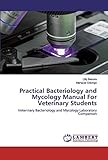  |
Practical Bacteriology and Mycology Manual For… | $83.05 | Buy on Amazon |
| 2 |
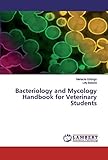  |
Bacteriology and Mycology Handbook for Veterinary… | $81.97 | Buy on Amazon |
| 3 |
  |
Veterinary Bacteriology: 2nd Fully Revised Edition | $152.99 | Buy on Amazon |
| 4 |
  |
Essent Vet Bacteriology & Mycology 6e | $91.82 | Buy on Amazon |
| 5 |
  |
Veterinary Bacteriology | $159.00 | Buy on Amazon |
